Only three percent of the water on Earth is freshwater, which is essential for lakes and serves as the sole source of drinkable water and irrigation. Therefore, it is crucial to study and preserve these lakes for both current and future needs. However, lakes vary significantly in size, with some containing as much as 20% of the world’s unfrozen freshwater reserves! Notably, the Great Lakes in North America stand out, claiming four of the top ten spots on this list. Continue reading to discover the most breathtaking freshwater bodies (with one notable exception) that our planet has to offer.
- Caspian Sea
- Lake Superior Lake
- Victoria Lake
- Huron Lake
- Michigan Lake
- Tanganyika Lake
- Baikal Lake
- Great Bear Lake
- Malawi Lake
- Great Slave Lake
Difference Between a Lake and a Sea
A lake is an enclosed body of standing water, typically freshwater, that forms through natural processes such as glacial, tectonic, or volcanic activities, or through human interventions like dam construction. Lakes are usually smaller than seas and are isolated from larger bodies of water. In contrast, a sea is a vast expanse of saltwater that is partly surrounded by land but remains connected to an ocean. Seas tend to be larger and deeper than lakes and are influenced by tidal movements.
However, the distinction between these terms can often be contentious. For instance, the Dead Sea, which is classified as a salt lake, challenges conventional definitions.
Another notable case is the Caspian Sea, which, despite being referred to as a “sea,” is technically classified as a lake. It is landlocked and not linked to any ocean, making it the largest lake in the world by surface area. Its designation as a “sea” may stem from historical reasons or its significant size and salinity. Scientifically, however, its separation from the oceans categorizes it as a lake.
The World’s Largest Lakes: An Exploration of Majestic Water Bodies
Caspian Sea – 371,000 km²

Caspian Sea
An oil platform off the coast of the Caspian Sea near Baku, Azerbaijan.
The Caspian Sea has long been a cornerstone of human industry and culture, spanning an impressive 371,000 km² (143,243 mi²) and claiming the title of the largest enclosed inland body of water on the planet. This vast expanse not only forms a natural boundary between Europe and Asia but also influences the climatic conditions and ecosystems surrounding it. While referred to as a “sea,” it is technically classified as a lake, exhibiting both saltwater and freshwater traits. Stretching approximately 1,200 km (745 mi) from north to south, with an average width of 320 km (200 mi), the Caspian Sea is fed by 130 rivers, the most significant of which is the Volga River. Its considerable size plays a vital role in regional geopolitics, impacting five countries: Russia, Kazakhstan, Turkmenistan, Iran, and Azerbaijan. The varied shoreline, from rugged cliffs to flatlands, supports diverse habitats and activities, such as fishing and oil extraction, making the Caspian Sea an essential waterway for trade and rich in oil and gas reserves.
Also Read:- Top 10 Most Expensive Paintings in the World 2024
Lake Superior – 82,103 km²

Lake Superior
Waves crash on the shore near Split Rock Lighthouse.
Lake Superior, a nearly legendary body of water, is the largest of North America’s Great Lakes, covering a vast area of 82,103 km² (31,700 mi²). It ranks as the largest freshwater lake by surface area and comes in third for volume. Geographically, it lies between the United States to the south and Canada to the north. Its immense size creates microclimates that affect surrounding vegetation and wildlife. With an average depth of 152 m (500 ft) and a maximum of 406 m (1,332 ft), Lake Superior boasts cold, well-oxygenated water layers. The lake’s substantial retention time of around 191 years means water remains in the lake for an extended period, impacting nutrient cycles and aquatic ecosystems. Major cities like Duluth and Thunder Bay are located along its shores, benefiting from shipping routes connected to the Atlantic Ocean via the St. Lawrence Seaway.
Also Read:- Top 10 Most Expensive Phones 2024
Lake Victoria – 69,484 km²

Lake Victoria
Fishing activities taking place in Lake Victoria.
Spanning 69,484 km² (26,828 mi²), Lake Victoria is a monumental freshwater lake in East Africa, bordered by Uganda, Kenya, and Tanzania. It ranks as the world’s second-largest freshwater lake by surface area and plays a crucial role in regional hydrology, serving as a significant source for the Nile River. The lake’s size contributes to localized rain systems, leading to densely populated shores that benefit from a temperate climate and agricultural opportunities. However, human activity and development have introduced pollution and overfishing, threatening the lake’s ecological balance. The lake also serves as a vital transportation route, facilitating trade and movement among the bordering nations. Despite its large area, Lake Victoria has a modest average depth of 40 meters (130 feet).
Read More: Top 10 Most Dangerous Weapons Ever Created
Lake Huron – 59,590 km²
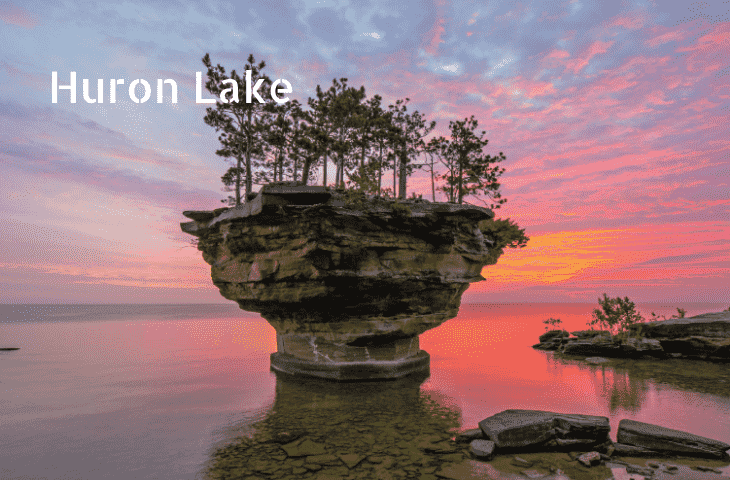
Lake Huron
A woman paddles a blue kayak around Lake Huron’s Turnip Rock on a sunny summer day.
Lake Huron, with a surface area of 59,590 km² (23,007 mi²), is the second-largest of North America’s Great Lakes. Its vastness significantly influences local weather patterns and the region’s biodiversity. Located primarily between the United States and Canada, Lake Huron is a hub for industry and commercial fishing. The lake is dotted with 30,000 islands, with Manitoulin Island being the most notable, adding complexity to its geography and influencing water currents. Historical events for indigenous communities have taken place around this lake, and fascinating formations such as Turnip Rock give it a unique character.
Lake Michigan – 57,753 km²
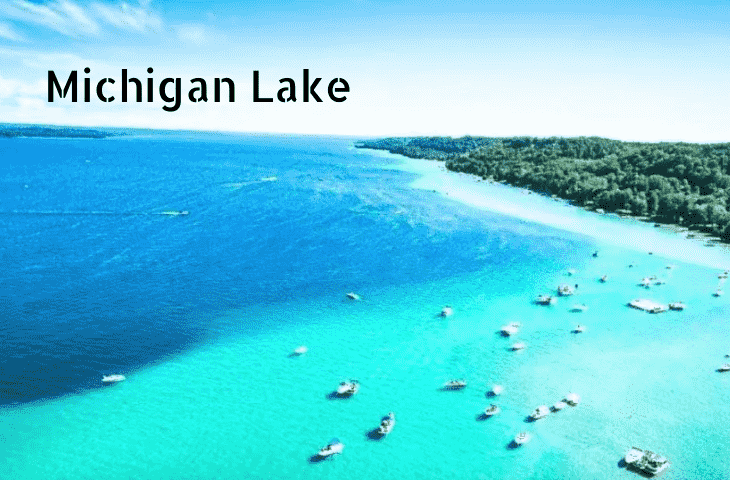
Lake Michigan
A lighthouse standing on the shores of Lake Michigan.
Lake Michigan, covering an area of 57,753 km² (22,298 mi²), is one of the five Great Lakes of North America and the only one entirely within the United States. Its extensive coastline of over 1,600 miles touches several states, including Michigan, Indiana, Illinois, and Wisconsin. The lake serves as a vital shipping and travel route, with key ports like Chicago and Milwaukee along its banks. Hydrologically, Lake Michigan connects to Lake Huron via the Straits of Mackinac, sharing water levels and effectively making them one lake, though this is a topic of debate. Numerous rivers, such as the Fox-Wolf and Grand, flow into Lake Michigan, maintaining its vast drainage basin. Notably, about 750 ships have met tragic fates in the fierce storms of Lake Michigan, highlighting that not all lakes are gentle and easy to navigate.
Lake Tanganyika – 32,900 km²
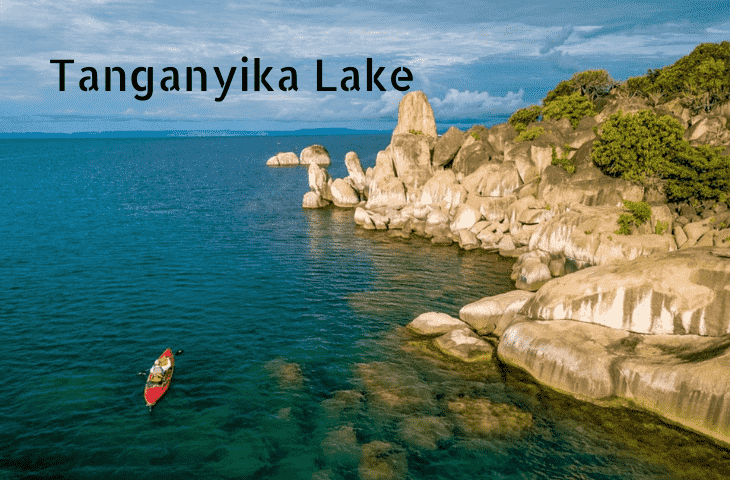
Lake Tanganyika
Women washing clothes on the shores of Lake Tanganyika. Editorial credit: Yury Birukov / Shutterstock.com
Recognizable even from outer space, Lake Tanganyika is the longest freshwater lake in the world, stretching across four African countries: Burundi, the Democratic Republic of the Congo, Tanzania, and Zambia. Covering 32,900 km² (12,702 mi²), it boasts an extraordinary depth of 1,470 m (4,822 ft), making it the second-deepest lake globally. Dating back 9 to 12 million years, Lake Tanganyika is one of the oldest freshwater lakes, characterized by steep, rocky shorelines and informative sediment layers. Artisanal fishing, particularly for species like sleek lates and Tanganyika sardines, is essential to the local economy. Additionally, water extraction for municipal and industrial purposes plays a critical role. However, challenges such as bilharzia, a parasitic disease, and waterborne diseases from untreated water are pressing issues for local communities.
Lake Baikal – 31,722 km²
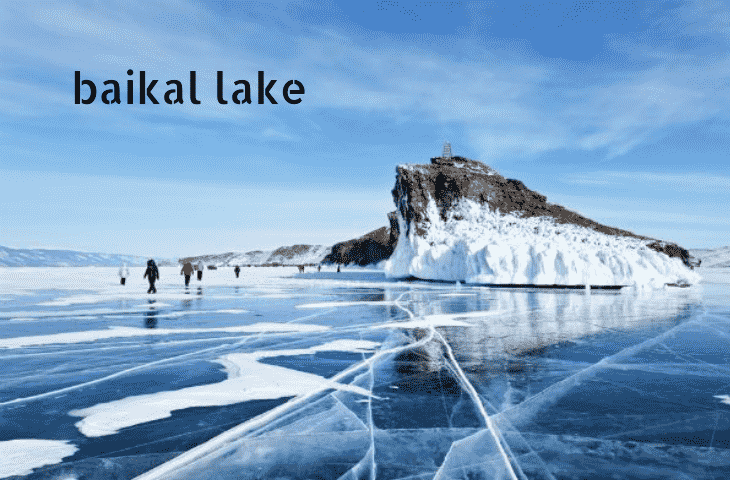
Lake Baikal
A winter view of Lake Baikal.
Located in southern Siberia, Russia, Lake Baikal is a remarkable geographic feature. Spanning 31,722 km² (12,247 mi²), it is the world’s deepest freshwater lake, with depths reaching up to 1,642 m (5,387 ft). Baikal is a biological hotspot, home to over 1,700 species of plants and animals, two-thirds of which are endemic. The lake holds sacred significance for indigenous communities like the Buryats, who have inhabited the area for centuries. Formed during the Mesozoic era around 25 million years ago, Lake Baikal is one of the oldest lakes on Earth. It is located in the Baikal Rift Zone, an active continental rift widening by approximately 2 centimeters annually. The lake primarily consists of sedimentary and metamorphic rocks, while holding around 20% of the world’s unfrozen freshwater reserves, notable for its exceptional clarity. Seasonally, the lake freezes from January to May, with ice thickness reaching up to 1.4 meters.
Great Bear Lake – 31,328 km²

Great Bear Lake
The Arctic community of Deline along the frozen Great Bear Lake. Image credit: mattcatpurple / Wikimedia Commons
Great Bear Lake, situated in the remote Northwest Territories of Canada, covers an area of 31,328 km² (12,095 mi²), making it the fourth-largest freshwater lake by volume and the eighth-largest by area in the world. It boasts an impressive depth of up to 446 m (1,463 ft). Its isolation from human settlements results in minimal human impact, rendering it one of the cleanest lakes globally. The lake’s clarity allows sunlight to penetrate deep into the water, fostering an optimal environment for photosynthetic organisms. During winter, Great Bear Lake is encased in ice that can reach thicknesses of up to two meters, although reports indicate this thickness may be decreasing over time.
Lake Malawi – 29,600 km²
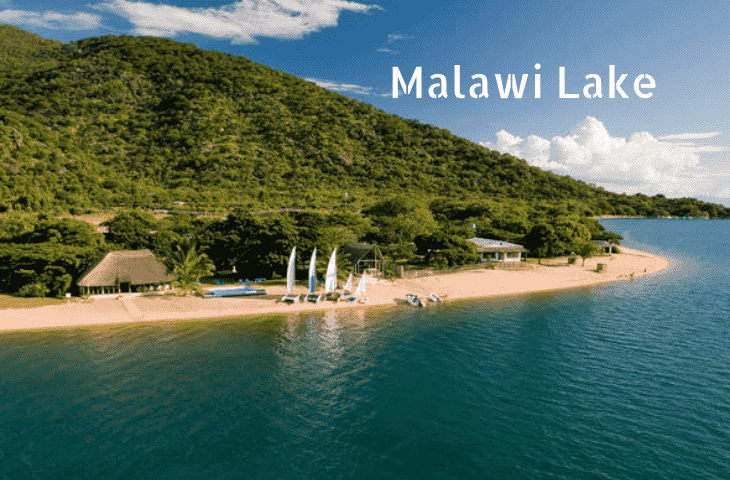
Lake Malawi
Kayakers exploring the waters of Lake Malawi.
Covering approximately 29,600 km² (11,428 mi²), Lake Malawi is part of the African Great Lakes and contains more water than any other lake in the African Rift system. This ancient body of water, estimated to be 1-2 million years old, reaches maximum depths of 706 meters (2,316 ft). Unlike Great Bear Lake, Lake Malawi supports a significant human population along its shores, with local economies primarily reliant on fishing, particularly of endemic cichlid species. A notable geographic feature of Lake Malawi is the massive rift valley that serves as both a geographic and ecological boundary. This rift contributes to high levels of endemism among its fish populations, making it a focal point for biological research. Despite its size, the lake faces pressures from overfishing and pollution from surrounding agricultural activities.
Great Slave Lake – 28,568 km²
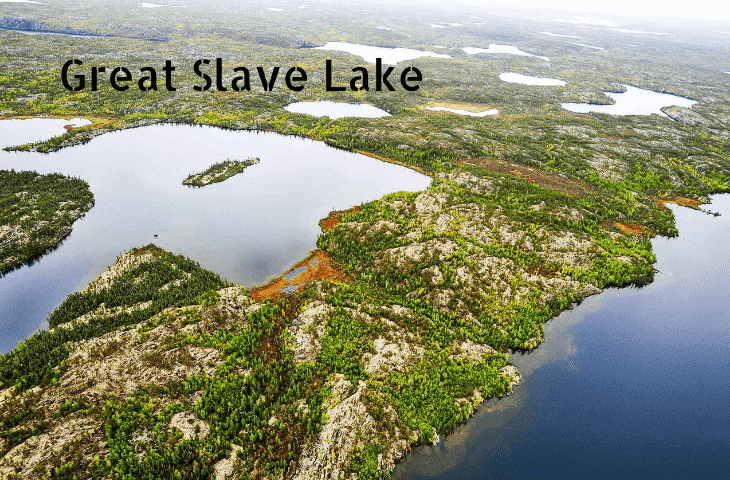
Great Slave Lake
Houseboats in Yellowknife Bay on Great Slave Lake.
Great Slave Lake, named after the Cree term for the Dene people who inhabited its southern shores centuries ago, is situated in Canada’s Northwest Territories. It is the second-largest lake in Canada and the deepest in North America, reaching depths of up to 614 meters (2,000 ft). Covering an area of approximately 28,568 km² (11,030 mi²), the lake is essential to the flow of the Mackenzie River, which is North America’s longest river system. The lake is also significant for its extensive wetlands, which support diverse wildlife, including migratory birds. As a region that experienced considerable industrial activity, Great Slave Lake has faced challenges such as pollution and habitat degradation. However, initiatives are underway to promote conservation and sustainable fishing practices.
Conclusion
The world’s largest lakes offer more than just breathtaking beauty; they are vital ecosystems that support diverse wildlife, human livelihoods, and cultural significance. From the Caspian Sea’s oil-rich waters to the tranquil expanses of Lake Malawi, these lakes are integral to our planet’s ecological balance and our historical development. Understanding and preserving these magnificent water bodies is essential for future generations.
30 Largest Lakes In The World
| Rank | Name | Countries with shoreline | Area |
| 1 | Caspian Sea | Kazakhstan Russia Turkmenistan Azerbaijan Iran | 371,000 km2 |
| 2 | Superior | Canada United States | 82,103 km2 |
| 3 | Victoria | Uganda Kenya Tanzania | 68,484 km2 |
| 4 | Huron | Canada United States | 59,590 km2 |
| 5 | Michigan | United States | 57,753 km2 |
| 6 | Tanganyika | Burundi Tanzania Zambia Democratic Republic of the Congo | 32,900 km2 |
| 7 | Baikal | Russia | 31,722 km2 |
| 8 | Great Bear Lake | Canada | 31,328 km2 |
| 9 | Malawi | Malawi Mozambique Tanzania | 29,600 km2 |
| 10 | Great Slave Lake | Canada | 28,568 km2 |
| 11 | Erie | Canada United States | 25,700 km2 |
| 12 | Winnipeg | Canada | 24,514 km2 |
| 13 | Ontario | Canada United States | 18,960 km2 |
| 14 | Ladoga | Russia | 18,130 km2 |
| 15 | Balkhash | Kazakhstan | 16,400 km2 |
| 16 | Bangweulu | Zambia | 15,100 km2 |
| 17 | Vostok | Antarctica | 12,500 km2 |
| 18 | Onega | Russia | 9,700 km2 |
| 19 | Titicaca | Bolivia Peru | 8,372 km2 |
| 20 | Nicaragua | Nicaragua | 8,264 km2 |
| 21 | Athabasca | Canada | 7,850 km2 |
| 22 | Turkana* | Ethiopia Kenya | 6,405 km2 |
| 23 | Reindeer Lake | Canada | 6,330 km2 |
| 24 | Issyk-Kul | Kyrgyzstan | 6,200 km2 |
| 25 | Urmia* | Iran | 6,001 km2 |
| 26 | Vänern | Sweden | 5,545 km2 |
| 27 | Winnipegosis | Canada | 5,403 km2 |
| 28 | Albert | Uganda Democratic Republic of the Congo | 5,299 km2 |
| 29 | Mweru | Zambia Democratic Republic of the Congo | 5,120 km2 |
| 30 | Nettilling | Canada | 5,066 km2 |
A lake is an enclosed body of standing water, typically freshwater, that forms through natural processes such as glacial, tectonic, or volcanic activities, or through human interventions like dam construction. Lakes are usually smaller than seas and are isolated from larger bodies of water. In contrast, a sea is a vast expanse of saltwater that is partly surrounded by land but remains connected to an ocean. Seas tend to be larger and deeper than lakes and are influenced by tidal movements.
However, the distinction between these terms can often be contentious. For instance, the Dead Sea, which is classified as a salt lake, challenges conventional definitions.
Another notable case is the Caspian Sea, which, despite being referred to as a “sea,” is technically classified as a lake. It is landlocked and not linked to any ocean, making it the largest lake in the world by surface area. Its designation as a “sea” may stem from historical reasons or its significant size and salinity. Scientifically, however, its separation from the oceans categorizes it as a lake.


